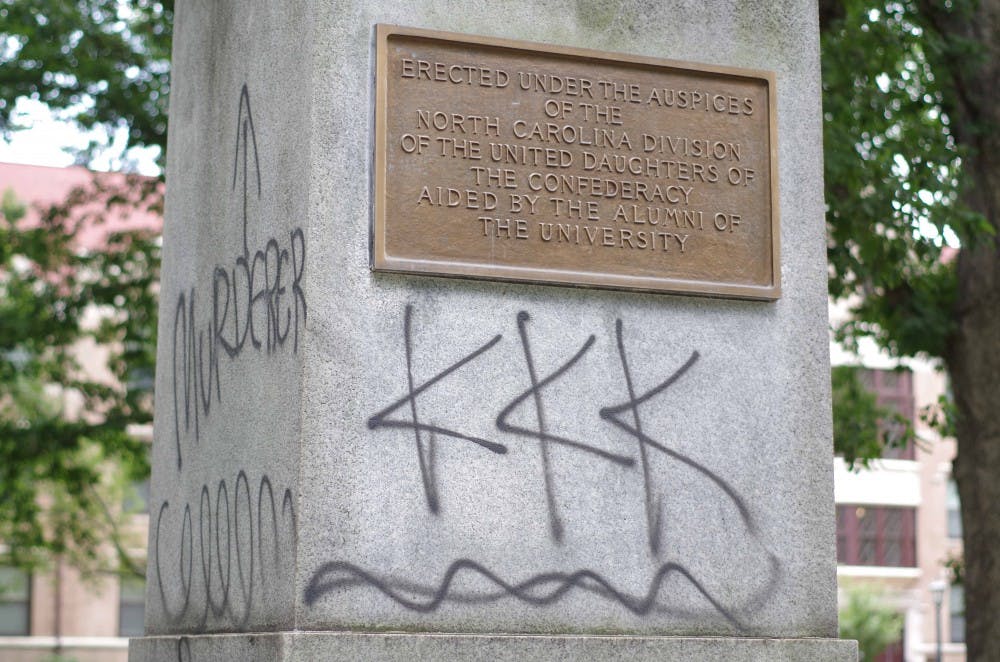Chuck Duckett, a Board of Trustees member, said this action only serves to distract from larger issues on campus.
"How could anyone possibly think they're doing anything at all to help their cause by doing that?" Duckett said. "That's not a protest. It's just typical of what's going on right now."
Duckett said he is concerned with the cost to fix the monument and the cost of monitoring the area. He said the plaque will be educational, but he does not think the spray paint accomplishes educational contextualization.
"If you believe it strongly, you should admit it and accept the consequences," Duckett said. "Using nonviolent protest, Martin Luther King changed the world, but I don't consider this nonviolent protest."
The University released a statement acknowledging that issues of race have led to many difficult discussions in the past year.
"The extensive discussions with the Carolina community this past year by the Board of Trustees and University leadership and the work we will be doing to contextualize the history of our campus is a big part of advancing those conversations," Rick White, a spokesman for the University, said in a statement. "We welcome all points of view, but damaging or defacing statues is not the way to go about it."
Ishmael Bishop, an activist with The Real Silent Sam Coalition, said he hopes the University will recognize the white supremacist culture that he believes Silent Sam perpetuates.
"I am excited that students or whoever is responsible have taken such an approach," Bishop said. "I hope that when the University decides to respond, they respond in a way that finally admits the truth about what Silent Sam is and what he represents."
In 1913 Silent Sam was constructed as a monument to the more than 300 UNC students who died in the Civil War. The sculptor, John Wilson, made the soldier "silent" by leaving out the cartridge box on the the soldier's belt, meaning he could not fire his gun. The monument was paid for by the Daughters of the Confederacy.
Julian Carr, the namesake of Carrboro, spoke at the monument's dedication. In his speech he recalled the time he whipped a black woman for insulting a white woman.
Students and faculty have contested the monument's meaning, with some saying it honors white supremacy. In 1992, students used the monument as a focal point for their Speak Out campaign following the Rodney King trial. In December, students, faculty and community members converged at Silent Sam to advocate for the renaming of Saunders Hall, which the Board of Trustees renamed Carolina Hall in May.
The messages written on Silent Sam mimic those used in Charleston, where protesters spray painted "black lives matter" and other messages on Confederate monuments.
To get the day's news and headlines in your inbox each morning, sign up for our email newsletters.
"It's shaking people outside of UNC and saying, on a global basis, that black lives matter," Vicente said.
Bishop said he hopes the University, and southern universities in general, will admit to the wrongs committed in the past.
"I can’t say I understand the inspiration or reason for why this is happening, but it shows I’m not alone in witnessing romanticized Confederate history," Bishop said of the monuments defaced across the country.
Duckett said he is disappointed in whoever spray-painted the monument.
"I hope they're happy, and I hope they tell their kids when they grow up," Duckett said. "I hope their kids will admire them for defacing property."
university@dailytarheel.com




